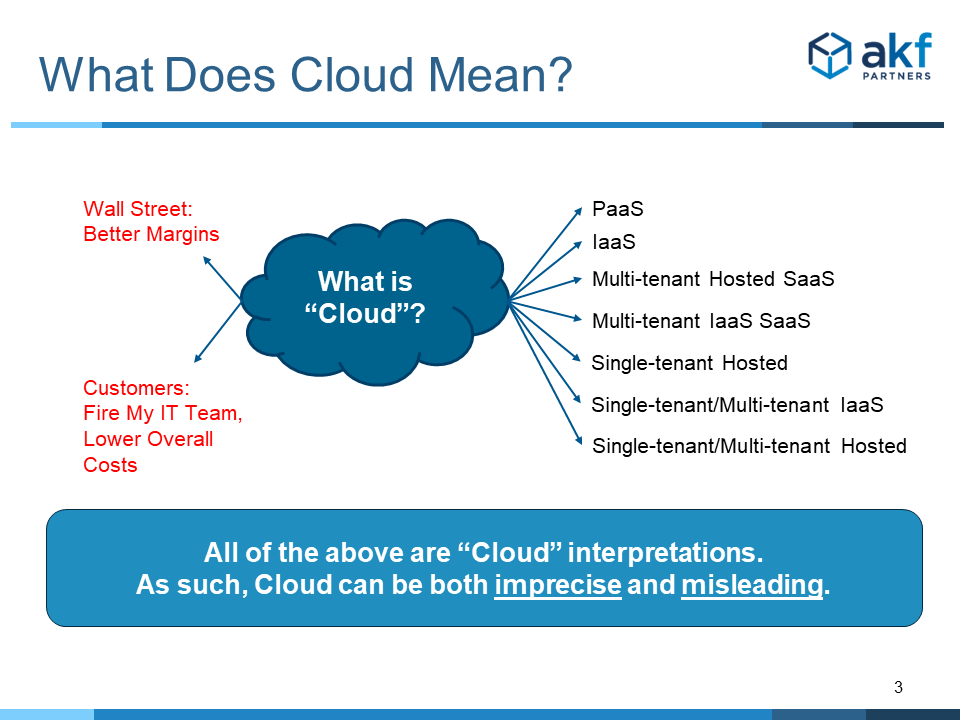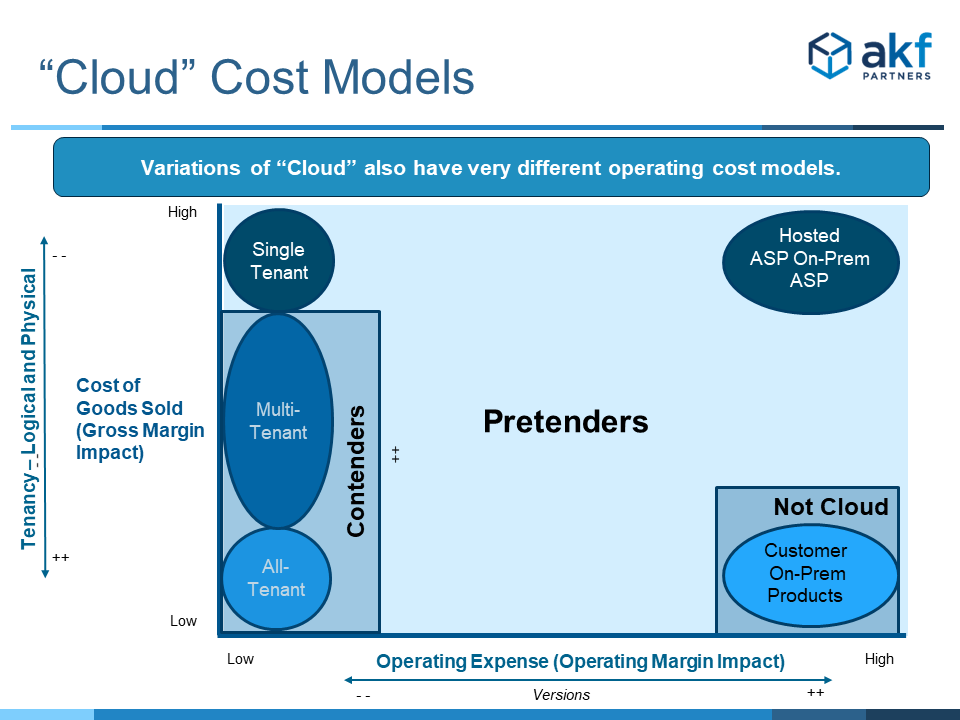Enough is enough already – stop using the term “Cloud”. Somewhere during the last 20 years, the term “Cloud” started to mean to product offerings what Sriracha and Tabasco mean to food: everything’s better if we can just find a way to incorporate it. Just as Sriracha makes barely edible items palatable and further enhances the flavor of delicacies, so evidently does “Cloud” confuse the unsophisticated buyer or investor and enhance the value for more sophisticated buyers and investors. That’s a nice analogy, but it’s also bullshit.
The term cloud just means too many things – some of which are shown below:

The real world of cloud offerings can be roughly separated into two groups:
- Pretenders
This group of companies know, at some level, that they haven’t turned the corner and started truly offering “services”. They support heavy customization, are addicted to maintenance revenue streams, and offer low levels of tenancy. These companies simply can’t escape the sins of their past. Instead, they slap the term “cloud” on their product in the hopes of being seen as being relevant. At worst, it’s an outright lie. At best, it’s slightly misleading relative to the intended meaning of the term. Unless, of course, anything that’s accessible through a browser is “Cloud”. These companies should stop using the term because deep down, when they are alone with a glass of bourbon, they know they aren’t a “cloud company”.
- Contenders
This group of companies either blazed a path for the move to services offerings (think rentable instead of purchasable) products or quickly recognized the services revolution; they were “born cloud” or are truly embracing the cloud model. They prefer configuration over customization, and stick to the notion of a small number of releases (countable on one hand) in production across their entire customer base. They embrace physical and logical multi-tenancy both to increase margins and decrease customer costs. These are the companies that pay the tax for the term “cloud” – a tax that funds the welfare checks for the “pretenders”.
The graph below plots Cloud Pretenders, Contenders and Not Cloud products along the axes of gross margin and operating margin:

Consider one type of “Pretender” – the case of a company hosting a single tenant, client customized software release for each of their many customers. This is an ASP (Application Service Provider) model. But there is a reason the provider of the service won’t call themselves an ASP: The margins of an ASP stinks relative to that of a true “SaaS” company. The term ASP is old and antiquated. The fix? Just pour a bit of “cloud sauce” on it and everything will be fine.
Contrast the above case with that of a “Contender”: physical and logical multi-tenancy at every layer of the architecture and \ a small number of production releases (one to three) across the entire customer base. Both operating and gross margins increase as maintenance costs and hosting costs decrease when allocated across the entire customer base.
Confused? So are we. Here are a few key takeaways:
- “Cloud” should mean more than just being accessed through the internet via a browser. Unfortunately, it no longer does as anyone who can figure out how to replace their clients with a browser and host their product will call themselves a “Cloud” provider.
- Contenders should stop using the term “Cloud” because it invites comparison with companies to which they are clearly superior: Superior in terms of margins, market needs, architecture and strategic advantage.
- Pretenders should stop using the term “Cloud” for both ethical reasons and reasons related to survivability. Ethically the term is somewhere between an outright lie and an ethically contentious quibble or half-truth. Survivability comes into play when the company believes its own lie and stops seeing a reason to change to become more competitive.
AKF Partners helps companies create “Cloud” (XaaS) transition plans to transform their business. We help with financial models, product approach, market fit, product and technology architecture, business strategy and help companies ensure they organize properly to maximize their opportunity in XaaS.
RELATED CONTENT
The Scale Cube - Architecting for Scale